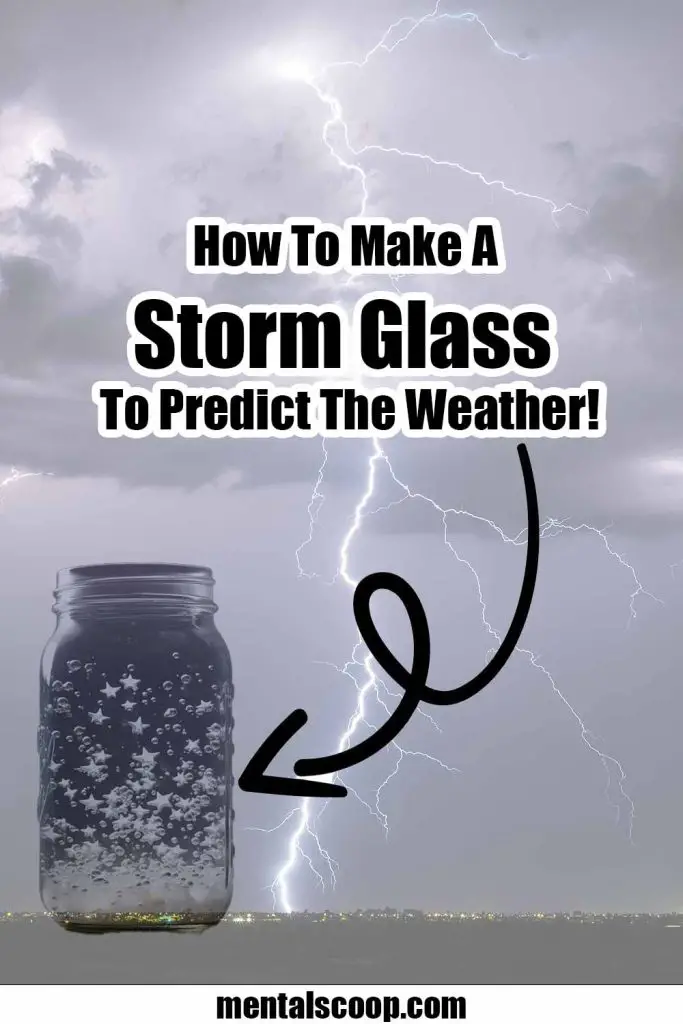How To Make A Storm Glass To Predict The Weather!

Ever wondered if you could predict the weather just like our ancestors did? Thanks to the wonders of science and a dash of creativity, you can!
In this exciting DIY adventure, we’ll guide you through the fascinating world of storm glasses – ancient weather forecasting devices that are making a comeback in the 21st century. Buckle up, because we’re about to unveil the secrets of creating your very own storm glass and predicting the weather like a pro!
Unraveling the Mysteries of Storm Glasses
Storm glasses, also known as weather glasses or Fitzroy’s storm barometers, have been used for centuries to forecast weather patterns. The concept is simple yet mesmerizing. These glass containers are filled with a mixture of water, ethanol, camphor, and other substances, creating a visually captivating display of crystals that change with the weather.
Ingredients for Your Magical Weather Predictor:
To embark on this weather-predicting journey, gather the following ingredients:
A Clear Glass Container:
A transparent glass container will allow you to witness the mesmerizing crystal formations inside.
Water:
Purified or distilled water works best for accurate predictions.
Ethanol:
Easily available in most drugstores, ethanol is a key ingredient that influences crystal formation.
Camphor:
You can find camphor tablets online or in local stores. This aromatic substance enhances the storm glass’s predictive powers.
Potassium Nitrate:
This chemical, commonly used in food preservation, contributes to the formation of crystals in the storm glass.
Sealant:
To ensure your storm glass remains airtight and functional.
Creating Your Storm Glass
- Measure the Ingredients: Carefully measure the water, ethanol, camphor, and potassium nitrate. The right proportions are crucial for accurate predictions.
- Mixing Magic: Combine the ingredients in your clear glass container. Stir gently until everything is dissolved completely.
- Seal the Deal: Seal the container tightly with a suitable sealant to prevent air from entering or escaping.
- Patience, the Final Ingredient: Place your newly created storm glass in a location with stable temperature and away from direct sunlight. Now, exercise patience as the magic unfolds.
Interpreting the Crystal Ball:
As the days pass, observe the changes within your storm glass. Crystals may form, dissolve, or change in appearance based on atmospheric pressure, temperature, and humidity. Familiarize yourself with the patterns to make accurate weather predictions. For example, clear liquid indicates fair weather, cloudy liquid suggests precipitation, and cloudy liquid with crystals foretells thunderstorms.
Congratulations, you’ve just unlocked the secrets of an ancient weather forecasting technique! By crafting your very own storm glass, you’ve tapped into the mysteries of weather prediction, connecting with generations past who marveled at the art and science of forecasting.
So, the next time you gaze at your storm glass and decode its crystalline messages, remember: you’re not just observing the weather; you’re delving into a centuries-old tradition that continues to inspire wonder and awe in the face of nature’s mysteries. Happy forecasting!

More interesting articles you may be interested in reading:

How To Remove A Tree Stump Painlessly
10 Vital Home Maintenance Tasks You’ll Regret If You Forget
See How Much Propane Is Left In A Tank With No Gauge
Thanks for reading and be sure to share this info with your friends using the social share buttons below.
Talking about social stuff, consider liking our Facebook page to keep up to date with our articles. Check out our other articles for more mental scoops!
